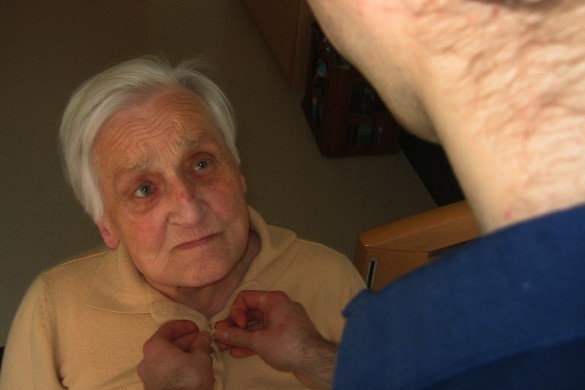Following the publication of the APPG for Longevity’s latest report (The Health of the Nation – a strategy for healthier longer lives) Des Holden, Medical Director at KSS AHSN and Implementation Lead for the Applied Research Collaboration KSS, reflects on the impact of longevity within health and social care.
Longevity is one of the most important issues facing society. Within the NHS old age is often thought of negatively, with its associated multiple medical diagnoses, and the increased prevalence of dementia with the loss of identity, ability and increase in social care demands this confers.
It is rare to hear staff in hospital talking about healthy older people who continue to work and enjoy active lives.
This is inevitable because the National Health Service is misnamed. It spends 365 days a year (366 this year) treating people with acute or chronic medical challenges.
Even more than this there has been a direction of travel towards the specialised, with age-, gender- and organ-experts. With only five per cent of total spend assigned for prevention of disease and consequent ill-health the NHS is, in reality, a mitigation and rescue service.
Mind the gap
Frank Dobson said that health inequality is the greatest inequality of all. Across the geography of England there is a 20 year difference in life expectancy between men born in some communities and those born in others.
This gap, also seen for women, is much larger than in many developed countries. Over and above this absolute, easily measured statistic, people are living an increasing number of years, and an increasing proportion of their lives in ill health.
The often described north-south divide is a divide in both life expectancy and healthy life expectancy, although it is not the only geographical health divide that can be described.
The excess in chronic and preventable health conditions seen in some communities limits individual ability to work and pay for things associated with health, like safe, warm housing, nutritious diet and the ability to exercise regularly.
Greater Manchester puts the poor health of its population and available workforce, where fewer men aged 55-65 are in work now than in the mid 1970s, in the top three barriers preventing economic prosperity.
The health of a nation
The statistics describing the impact and unfairness of health inequality are shocking and undeniable, but they cannot be addressed by the NHS doing better acute treatment. This is made clear in The Health of the Nation – a strategy for healthier longer lives (APPG for Longevity, February 2020).
This document calls for action at government level, as pledged in the Conservative Party manifesto, with legislation and action to address the impact of high-risk behaviours, as well as cross department action on transport, education and housing.
Tax disincentives, legislation and the acceptability of e-cigarettes have led to falling smoking rates across the country, but it remains higher in poorer demographics. Similar action to reduce alcohol and sugar consumption would improve health, while the accusations of a nanny state, smoking tells us, would probably be comparatively short lived.
A role for all
There is a role for central government, but there is an equally important role for local government and local community. There are numerous examples of innovative approaches and compacts made between councils and local residents that have successfully impacted on behaviours associated with poor health.
The APPG report highlights the Wigan Deal, co-designed with citizens and resulting in enhanced self-reliance, better collaborative working between organisations who have permission to innovate, and a greater role at scale for the voluntary sector. The subsequent improved healthy life expectancy exceeds most geographical neighbours who faced similar levels of challenge.
So what does the APPG on Longevity mean for the NHS and for Kent, Surrey and Sussex?
The NHS, as well as academia and industry, need to continue to develop acceptable innovation that supports people who live with health conditions to spend as much time well, and as little time as possible limited by their illness.
The psychology of wellness
Focus on safety, digital solutions, data driven innovation and a greater importance (and more money) for prevention are appropriate and important.
The psychology of wellness needs to underpin technology that nudges people towards healthier choices.
Thirty per cent of medicines prescribed by the NHS are not taken properly. This needs to be borne in mind when social prescribing becomes more widespread.
Integrated care systems are a very positive step with physical and mental health, and social health being considered together. As these partnerships mature, and incentives align, we must actively level the offering across all citizen groups. Innovation cannot just mean more for those who already access the best, it must not leave behind those who are hard to reach.
A partnership approach
In Kent, Surrey and Sussex we have coastal communities who share many challenges with similar communities around the country.
The same life expectancy maps describing inequality in the north show life expectancy for women born in east Kent to be as bad as anywhere in England.
We have our own inequalities and KSS AHSN and our Applied Research Collaboration need to work with all partners to try to improve outcomes and health life expectancy for all.
– Des Holden





